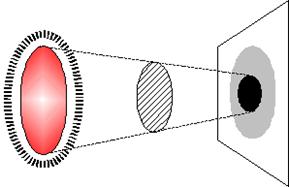|
H |
How Dark can it be? |
 Little Dipto is fascinated by shadows. He spends hours
holding up various objects in front of the wall, watching the shadow grow and shrink
as he moves the object. But these days he has been developing a special
interest in shadows of polygons; convex polygons to be precise. But he cannot
seem to be able to predict the size of the shadow before he actually cuts out a
paper polygon and forms a shadow of it on the wall. He has now turned to you
for help.
Little Dipto is fascinated by shadows. He spends hours
holding up various objects in front of the wall, watching the shadow grow and shrink
as he moves the object. But these days he has been developing a special
interest in shadows of polygons; convex polygons to be precise. But he cannot
seem to be able to predict the size of the shadow before he actually cuts out a
paper polygon and forms a shadow of it on the wall. He has now turned to you
for help.
Input
The
input consists of at most 60 test cases. Each test case starts with an integer N,
the number of vertices in the polygon given. The value of N satisfies 3
<= N<= 10000. The next N lines contain a pair of integers
each, x and y, specifying the coordinates of each vertex of the polygon in
counterclockwise order (the z-coordinate of each vertex is always 0). These
coordinate values will always be between -10000 and 10000 inclusive. The last
line consists of two real numbers 0 <= R <= 100 and 1 <= D
<= 1000. These two numbers specify the light source: it is a flat circular
source of uniform intensity along the plane z = D, centred on (0,0,D) and
radius R. The wall is a flat, smooth and infinitely large surface along the
plane of z = -D. You may assume that there is no other light source in the
vicinity. You may also assume that the input data will always be such that it
specifies a polygon of non-zero area and that the same point will not be
present in the data multiple times.
The last input is followed
by a single 0 on the line, which should not be processed.
Output
There
should be one single line of output for each test case. It should be formatted
as “Case c: u p”, where c is the case number with the first case designated as
case 1, u is the area of the umbra (the part of the shadow that is completely
dark, usually near the center) and p is the area of the rest of the shadow (the
lighter part of the shadow that is only partially dark) called penumbra. The
diagram above should help clarify the terms. Both areas should be within a
relative error bound of 1e-6 of the actual value. See the sample output below
for further clarification.
|
Sample Input |
Sample Output |
|
5 0 0 10 0 10 10 1 10 0 9 5 10 0 |
Case 1: 100.000000 770.681952 |
Problem setter: Samee Zahur Special Thanks: Md.
Towhidul Islam